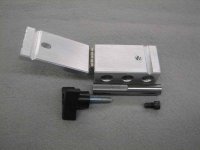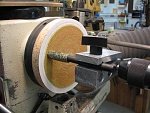What Ray says is important, with a mandrel saver you should not use the knurled nut, it must go over the solid part of the metal bar else you will get chatter especially with a carbide tool because you don't have as much bevel compressing and holding the wood in place.
I use a barrel trimmer all of the time and don't have the splitting problem, unless the blank itself has a hidden fissure.
The other element is when you turn, don't insert the cutting edge into the endgrain, instead cut from the middle to the ends, then you will avoid lifting the grain and forcing the split equally you will be compressing the fibres down and slicing them. (if you don't already)




